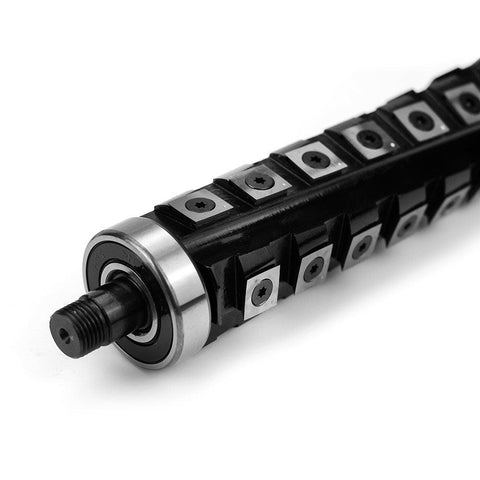Unveiling the Magic of the Helical Cutterhead: What It Does and Why It Matters
In the realm of woodworking, achieving a flawless finish and maintaining tool efficiency are crucial to the craft. Among the array of technological advancements in this field, the helical cutterhead stands out as a transformative component for planers and jointers. But what exactly does a helical cutterhead do, and why has it become a favored choice for both professionals and enthusiasts? Understanding the mechanics and benefits of this cutting-edge technology offers insight into why it has revolutionized woodworking.
At its core, a helical cutterhead is designed to enhance the precision and efficiency of cutting operations in woodworking machines. Unlike traditional cutterheads that use a series of straight knives arranged in parallel, the helical cutterhead features blades arranged in a spiral pattern around the drum. This helical configuration allows each blade to engage the wood gradually, providing several significant advantages over conventional designs.
One of the primary functions of the helical cutterhead is to produce a smoother cut. The spiral arrangement of the blades means that the cutting action is distributed more evenly across the wood surface. As the cutterhead rotates, the helical pattern allows for multiple points of contact with the wood, reducing the likelihood of uneven cuts or tear-out. This leads to a finer finish directly from the machine, often minimizing or eliminating the need for additional sanding or finishing work. The smoother cut is particularly beneficial when working with hardwoods or figured grain patterns, where traditional straight knives might struggle with tear-out and imperfections.
Another crucial advantage of the helical cutterhead is its impact on noise reduction. Traditional planer and jointer cutterheads, with their straight knives, can be quite noisy during operation. The helical cutterhead design helps to mitigate this issue by ensuring that the blades engage the wood more gradually and evenly. This results in a quieter cutting action, which is a significant benefit in both professional shops and home workshops where noise levels can be a concern. The quieter operation enhances the overall working environment, making it more comfortable and less disruptive.
Durability is a key feature of the helical cutterhead that contributes to its appeal. The blades used in a helical cutterhead are typically made from carbide, a material known for its hardness and resistance to wear. This makes the blades much more durable compared to traditional steel knives. Carbide blades maintain their sharpness longer and require less frequent replacement, which reduces downtime and maintenance costs. This durability is particularly advantageous for those who work with abrasive materials or in high-volume production settings.
The helical cutterhead also offers enhanced versatility in handling various types of wood. Traditional straight knives can struggle with certain wood species, particularly those with complex grain patterns or irregularities. The helical design, with its overlapping blades, allows for smoother cutting through different grain structures, reducing the risk of splintering or tearing. This adaptability makes the helical cutterhead a valuable tool for a wide range of woodworking projects, from delicate inlays to large panels.
Installation of a helical cutterhead typically involves replacing the existing straight-knife cutterhead with the new helical unit. Most helical cutterheads are designed to be compatible with existing machines, and they come with detailed instructions for installation. The process usually involves removing the old cutterhead, fitting the new one in place, and making necessary adjustments to ensure proper alignment. For those new to this upgrade, many manufacturers offer support and resources to assist with installation and calibration.
Maintenance of a helical cutterhead is relatively straightforward. The carbide blades are less prone to chipping and dulling compared to traditional knives, which means that maintenance primarily involves keeping the cutterhead clean and free from debris. Periodically, the blades may need to be rotated or replaced, but this process is typically less frequent than the sharpening or replacement required for straight knives. Many helical cutterheads are designed with user-friendly features that simplify blade rotation and maintenance tasks.
In essence, the helical cutterhead revolutionizes the cutting process by offering smoother finishes, reduced noise, greater durability, and versatility across various wood types. Its spiral blade arrangement provides a more efficient and effective cutting action, transforming the performance of planers and jointers. For woodworkers seeking to enhance their craftsmanship and achieve superior results, the helical cutterhead represents a significant technological advancement that elevates the quality and efficiency of their work. By understanding what a helical cutterhead does and the benefits it provides, woodworkers can make informed decisions about upgrading their equipment and improving their overall woodworking experience.







